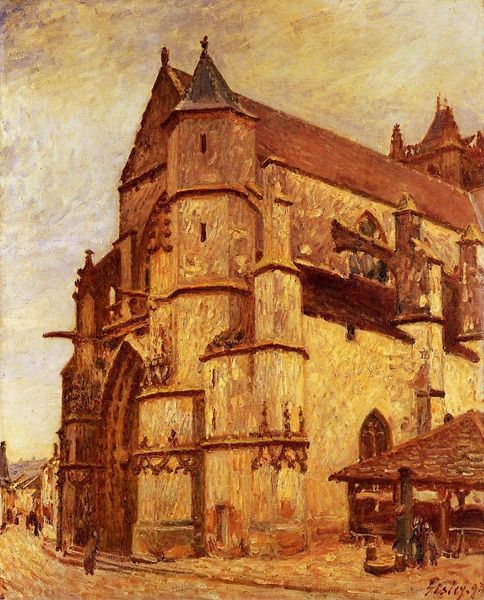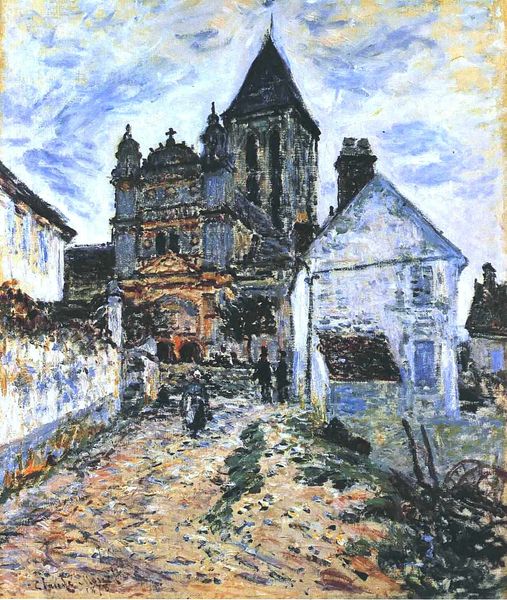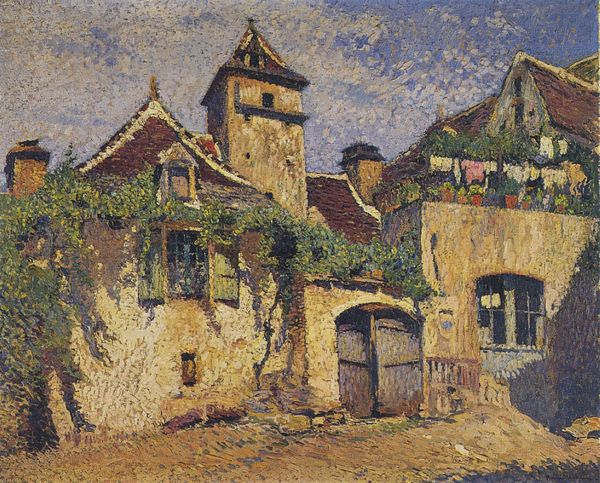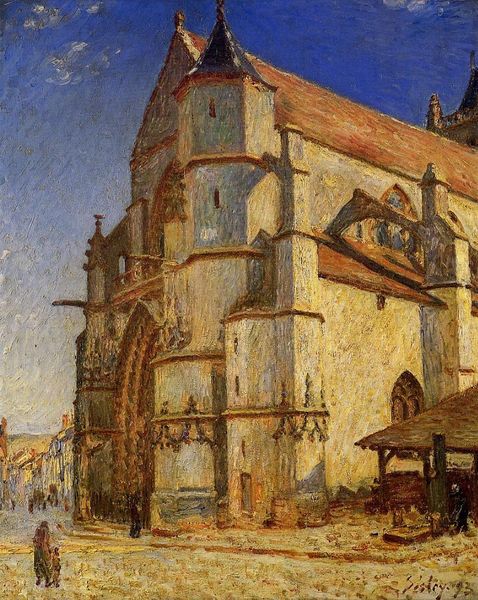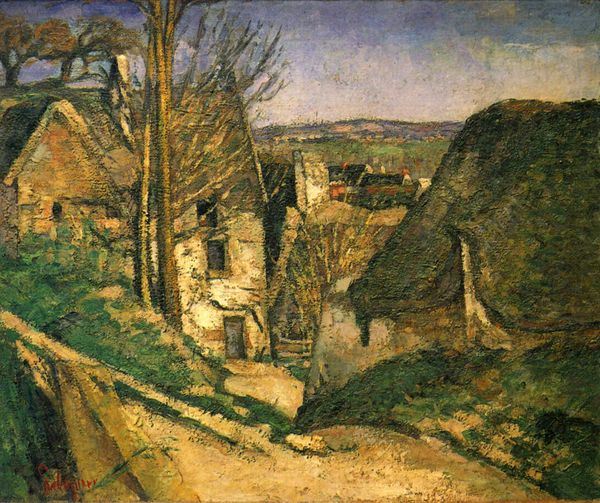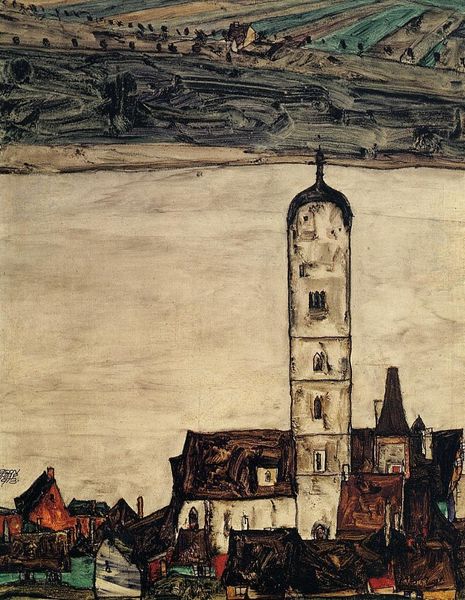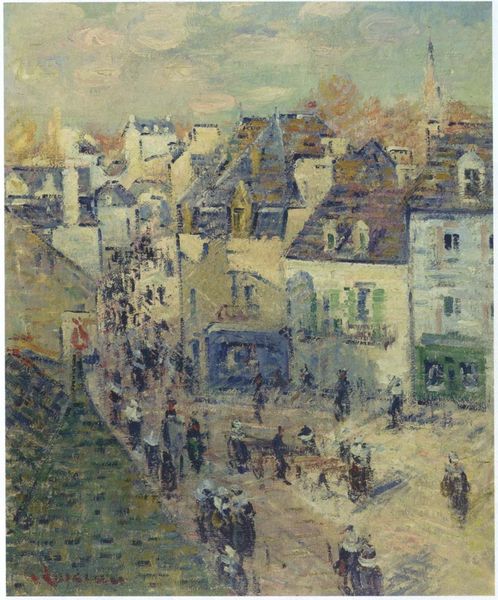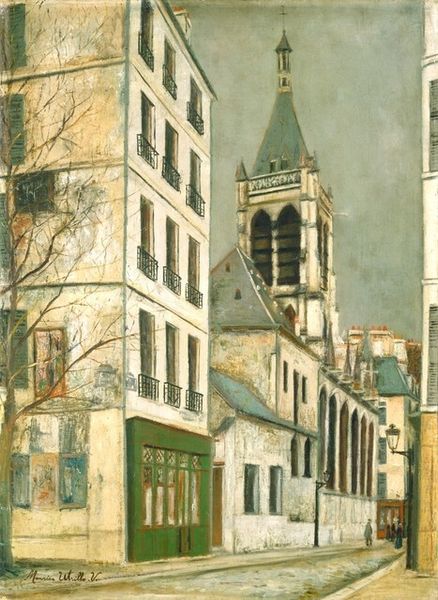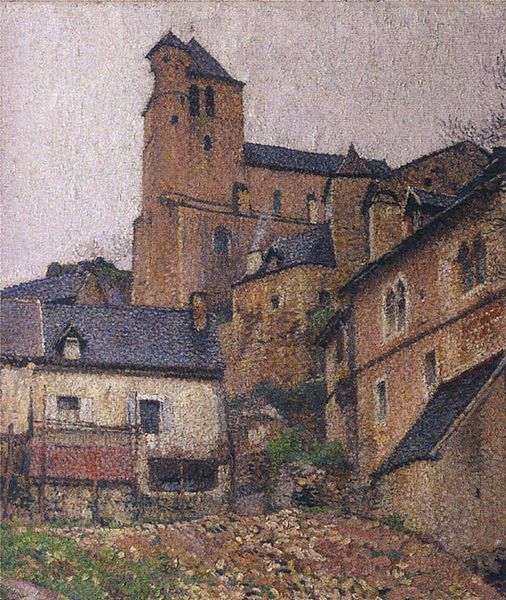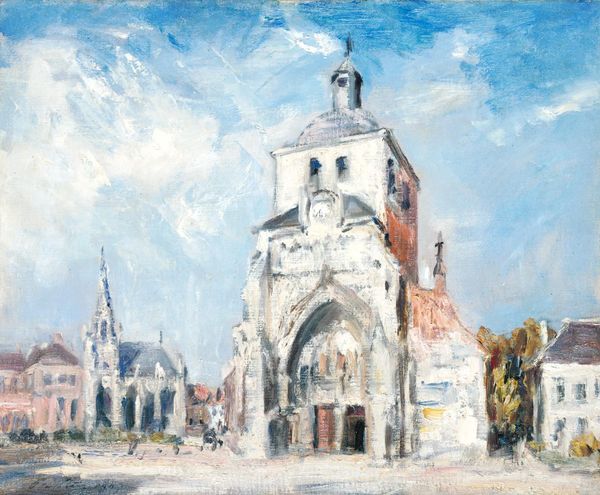
Dimensions: 73 x 60.5 cm
Copyright: Public domain
Editor: This is Alfred Sisley’s “Church at Moret after the Rain,” painted in 1894 using oil paint. There's a certain serenity to it; the soft colors and brushstrokes create a calm, almost melancholic mood. What stands out to you? Curator: For me, this painting speaks volumes about the role of art in shaping civic identity. Sisley's repeated depiction of the Church at Moret wasn't just about capturing a visual likeness; it was about reinforcing the importance of the Church as a communal and historical anchor in a rapidly changing society. Think about the social context. The late 19th century was a period of significant urbanization and secularization. How might a painting like this, displayed in a public gallery, serve as a reminder of tradition and stability? Editor: So, beyond the artistic technique, the choice of subject is also a statement? Curator: Absolutely. The deliberate focus on architecture, specifically a church, subtly promotes institutional values. It makes me think of how museums themselves often adopt architectural styles intended to project authority and permanence. Do you see parallels between Sisley's artistic choices and the architectural strategies employed by institutions like museums? Editor: That’s a great point! It’s like the painting becomes a monument within a monument, reinforcing those traditional values. Curator: Exactly. It prompts us to consider who decides which aspects of society deserve this artistic 'monumentalization,' and what that signifies about their power. What did you think about that? Editor: I never thought of landscape painting having such cultural influence before! This opens up so many ideas to explore. Thanks for the insight!
Comments
No comments
Be the first to comment and join the conversation on the ultimate creative platform.
